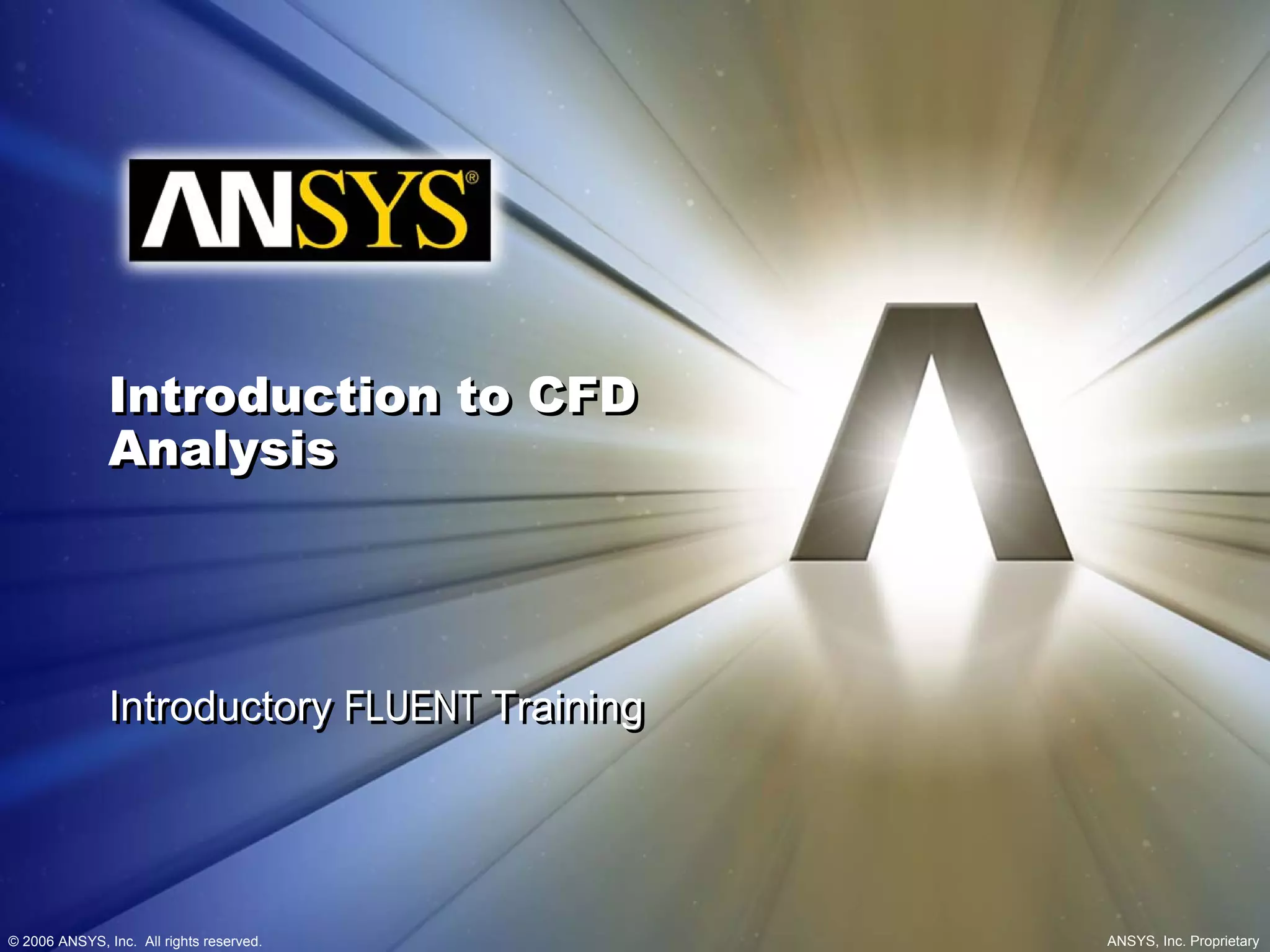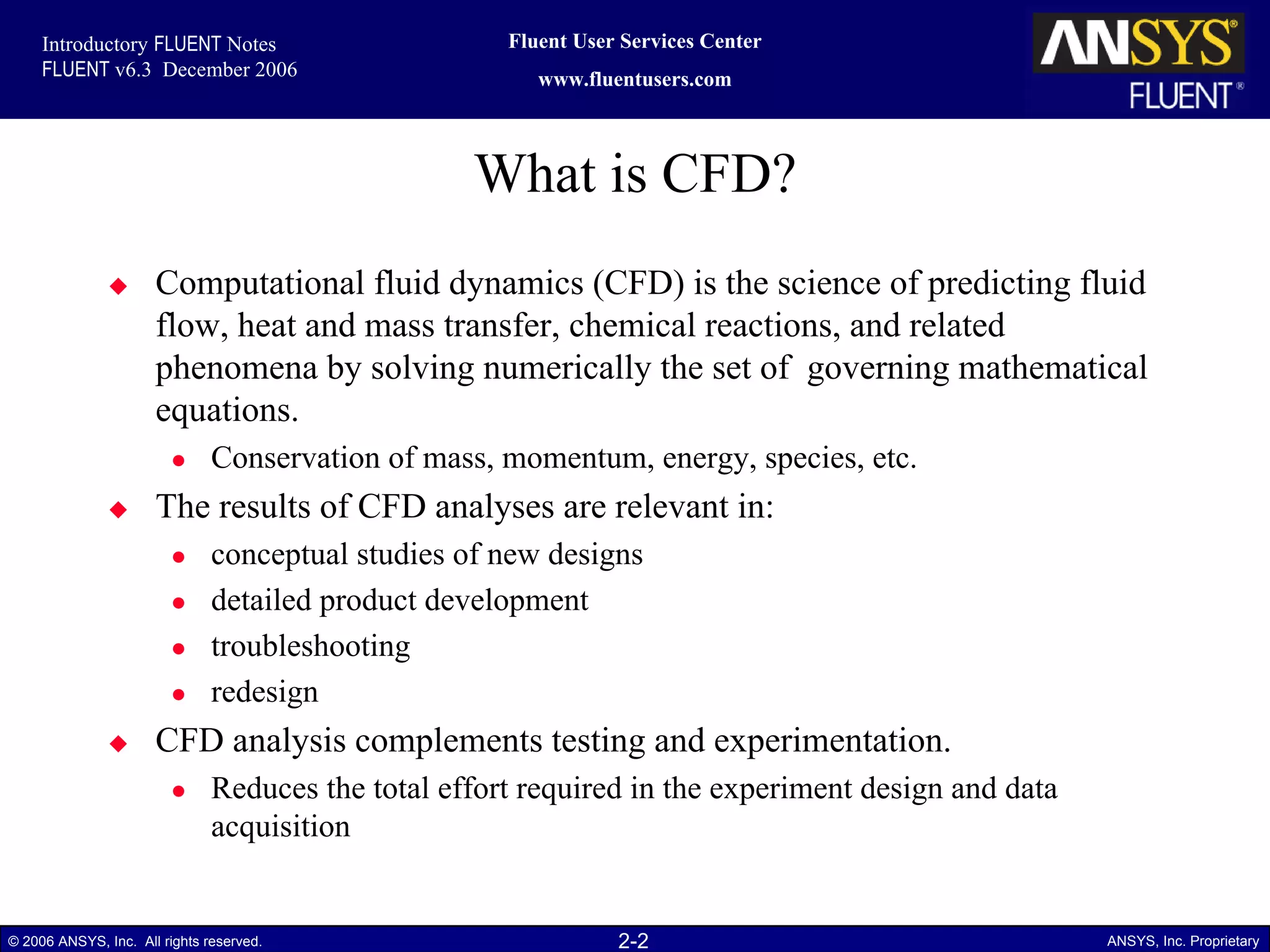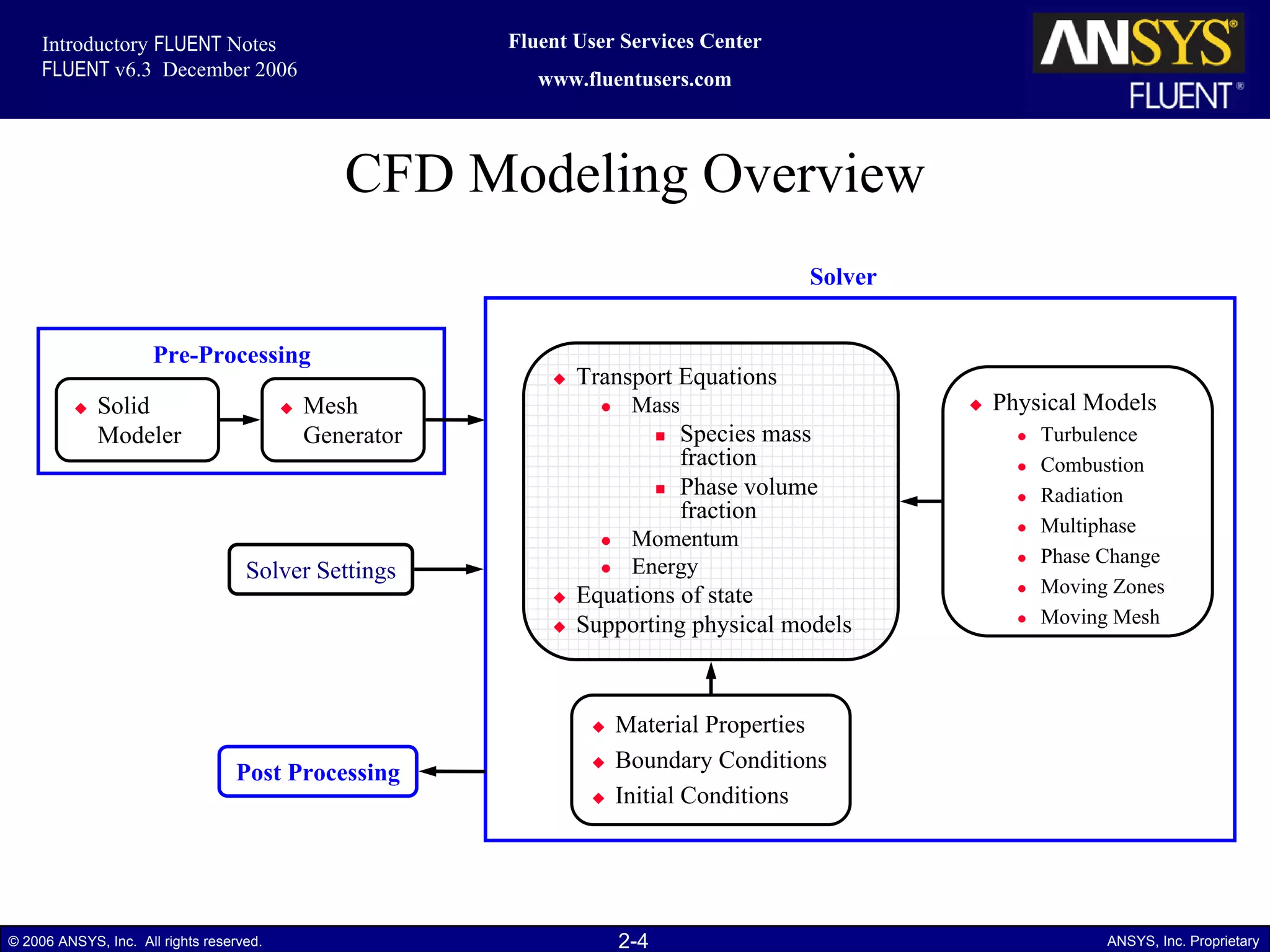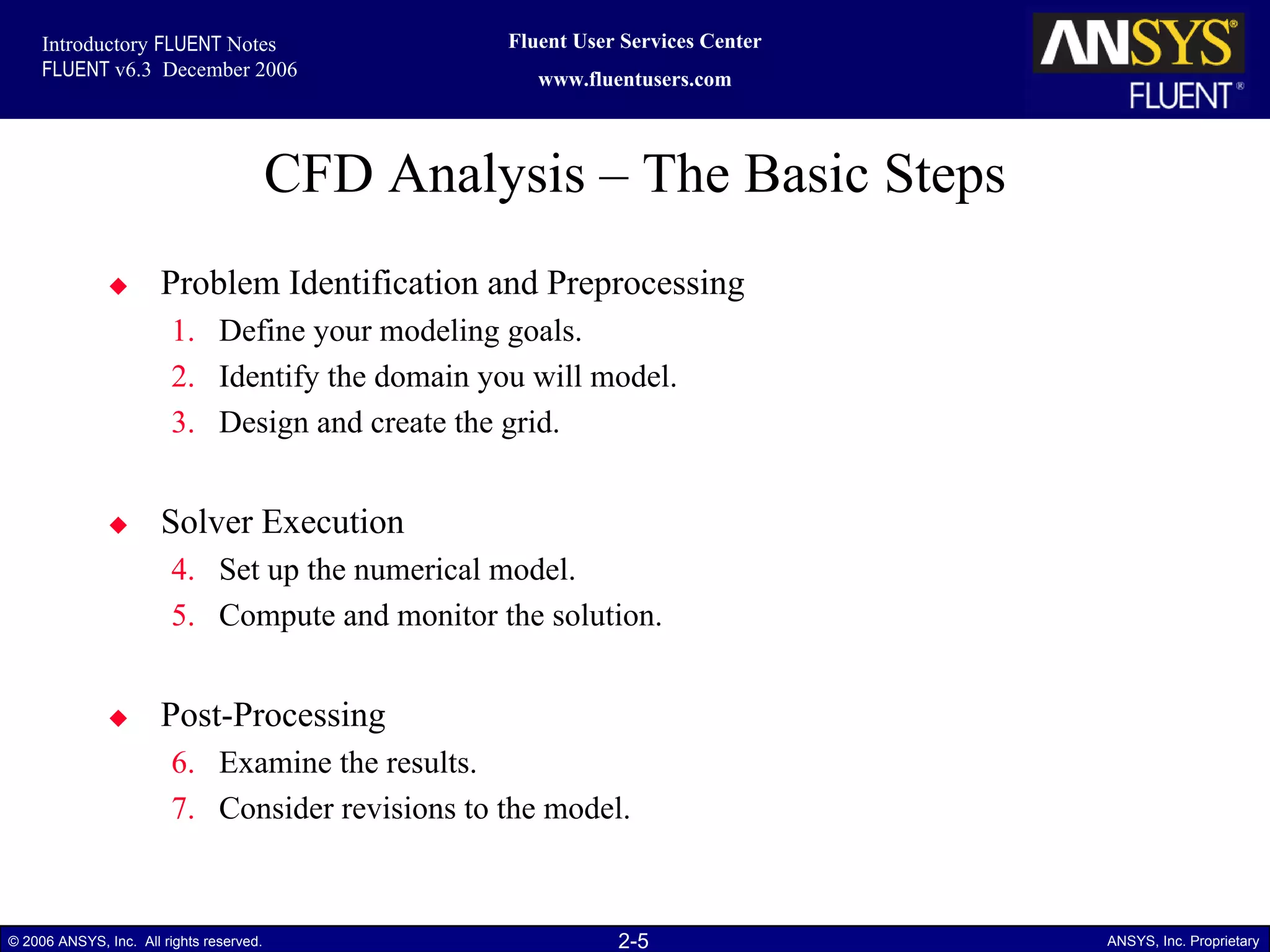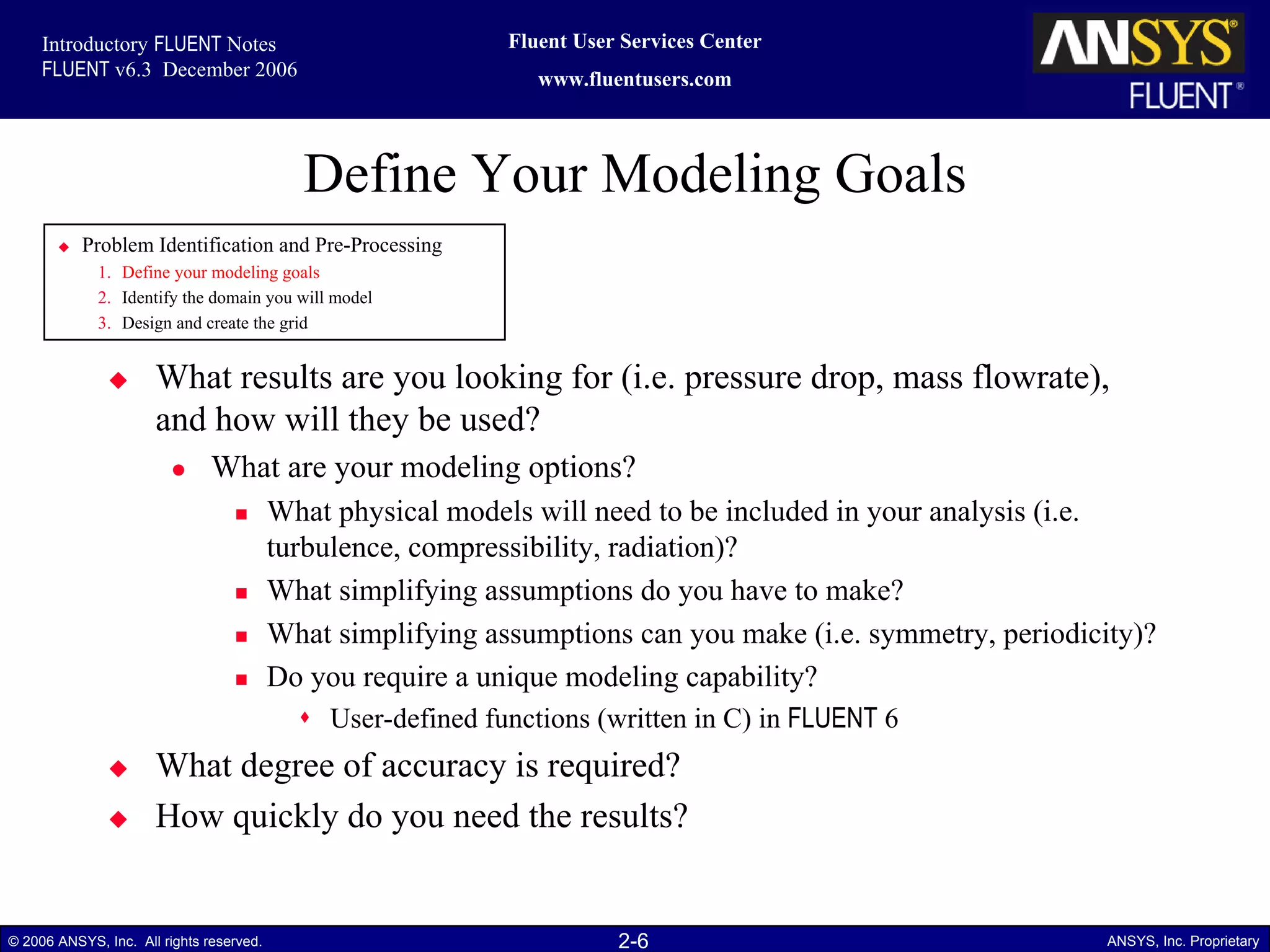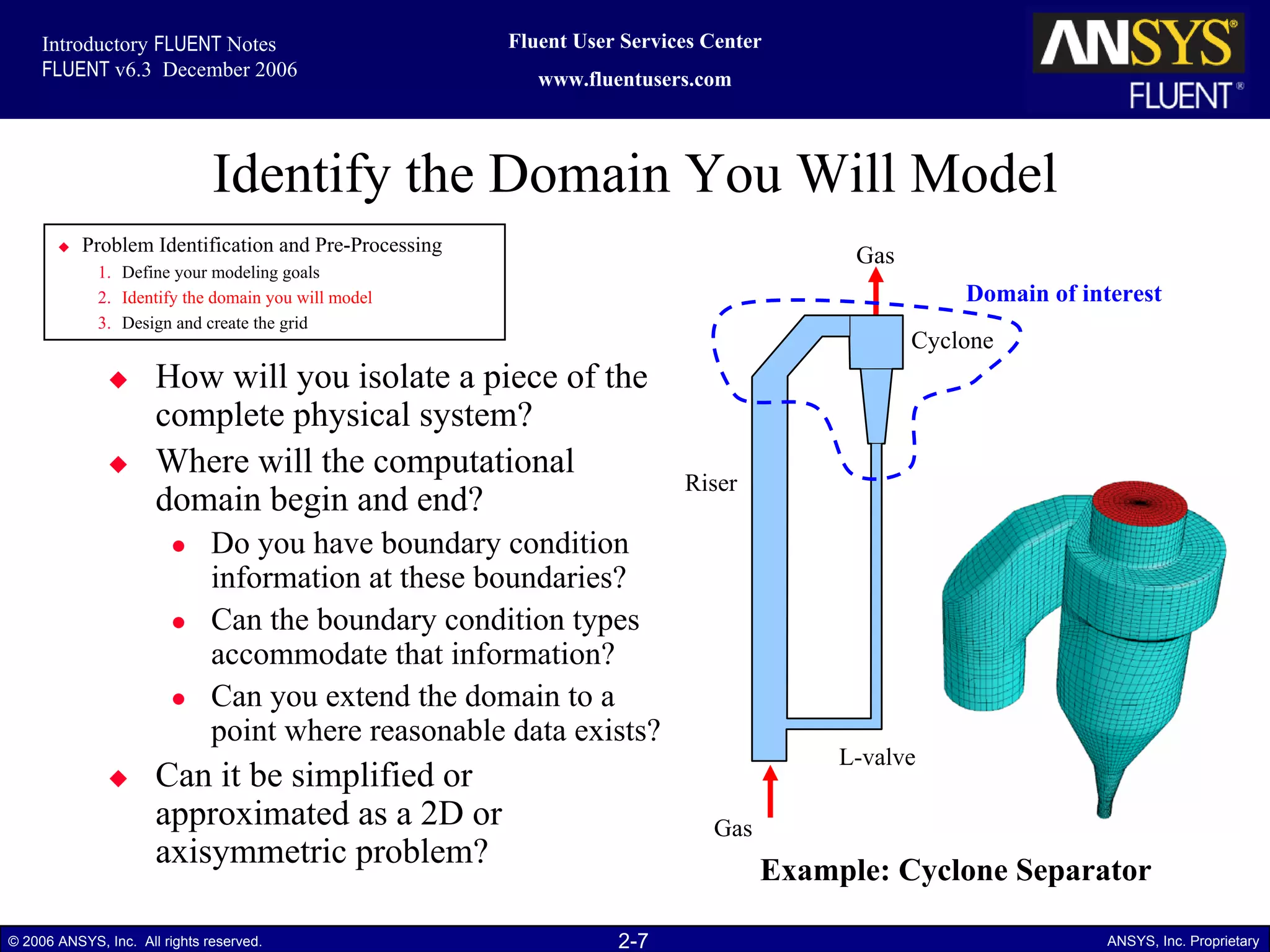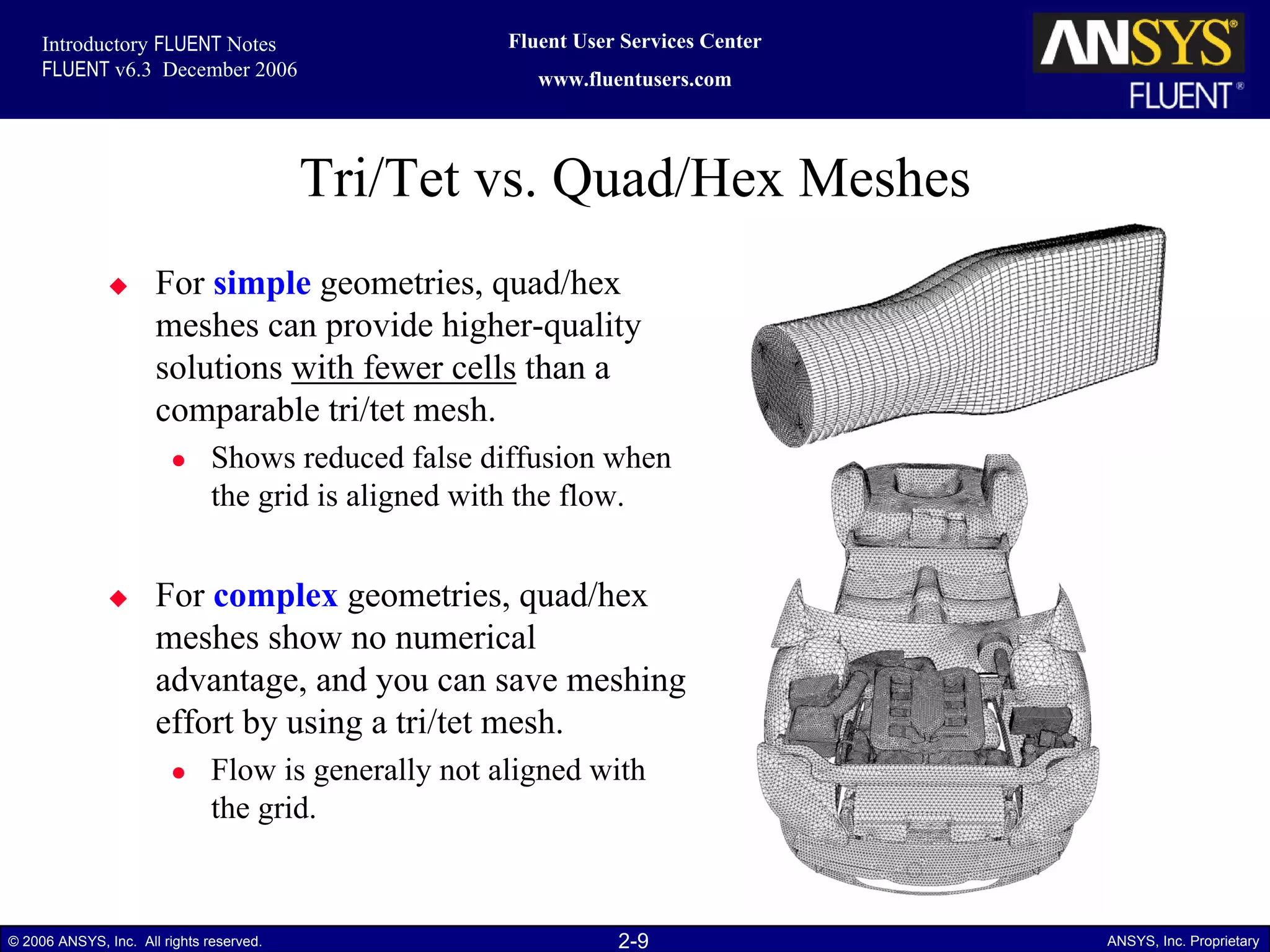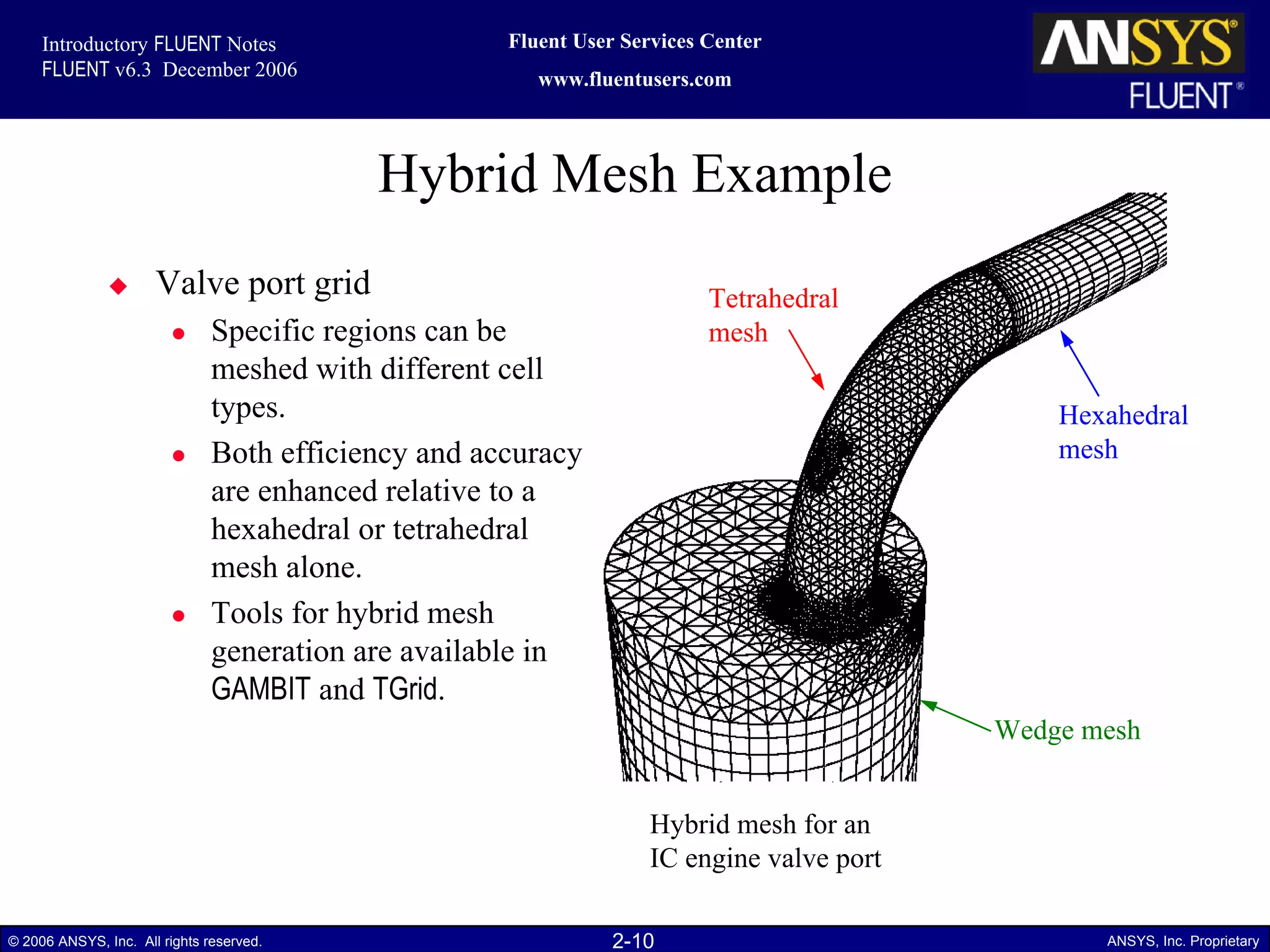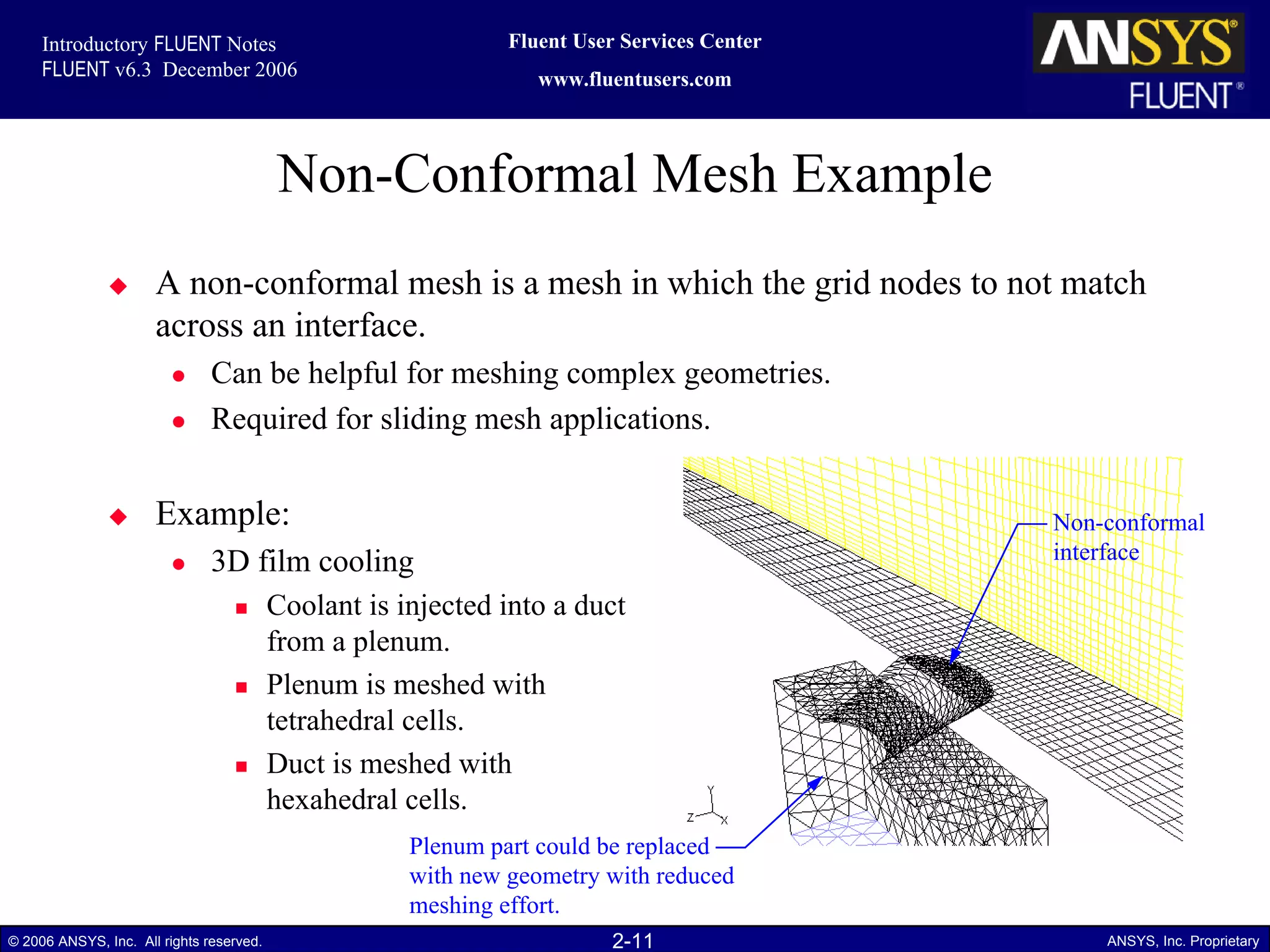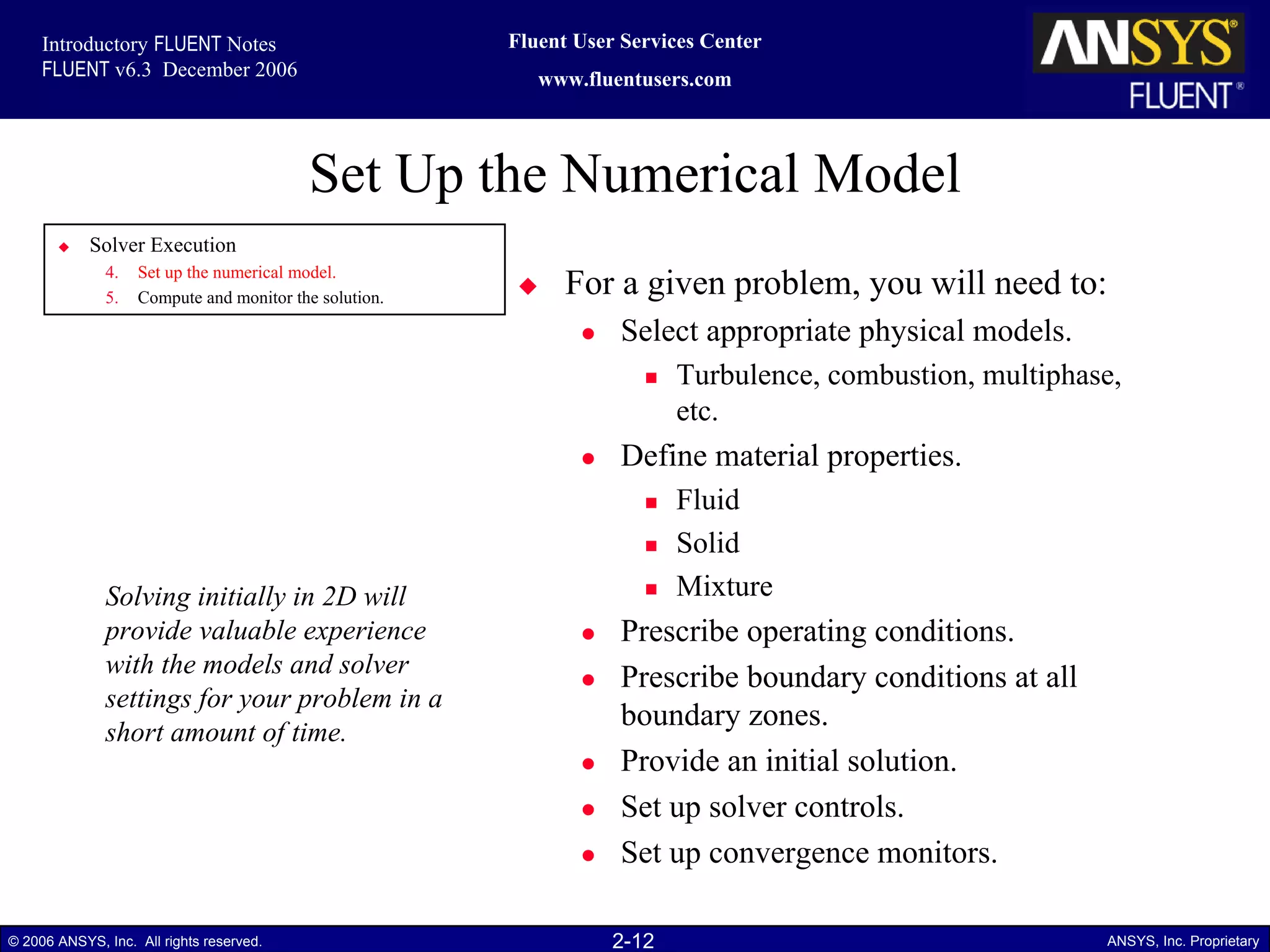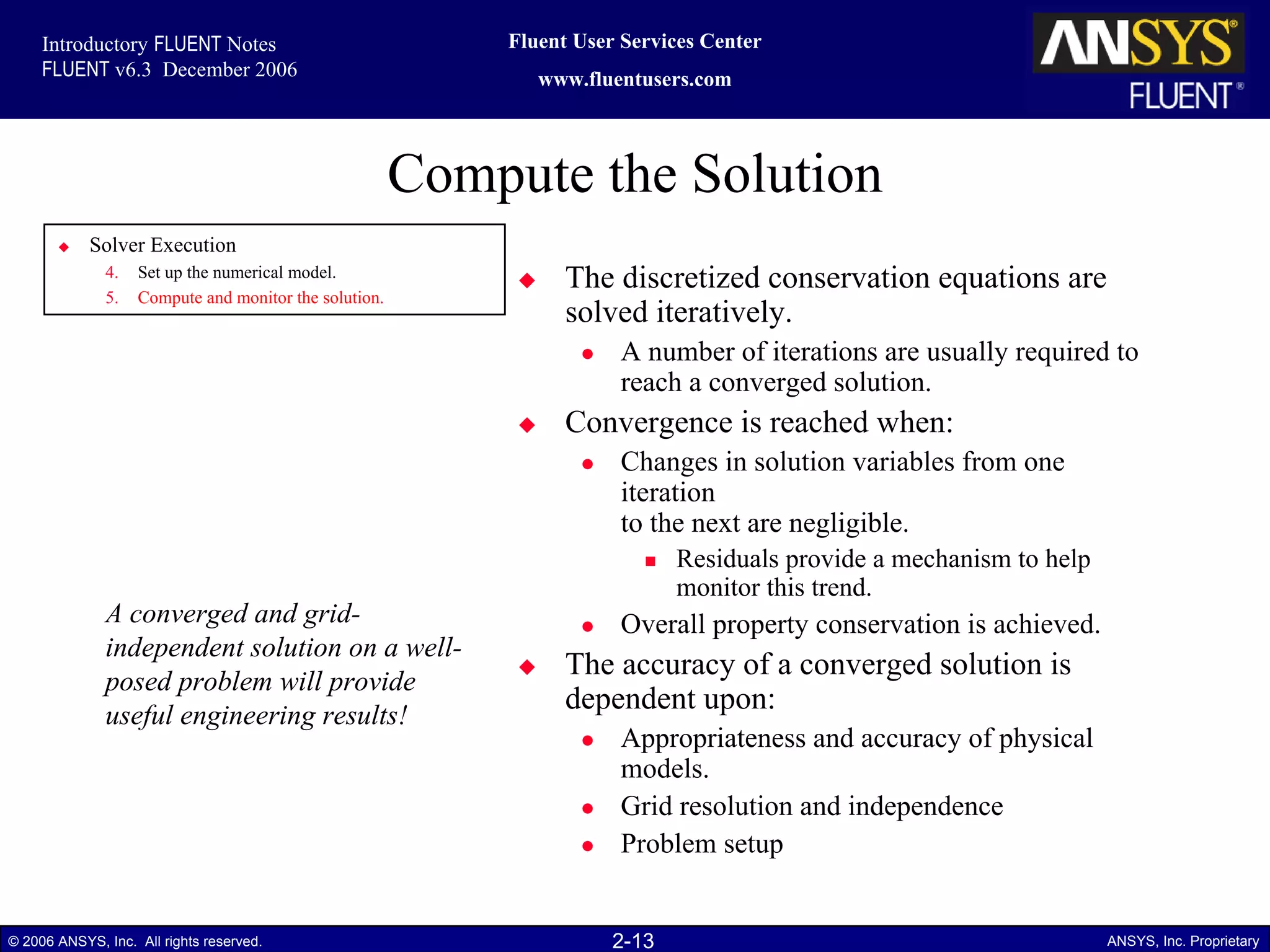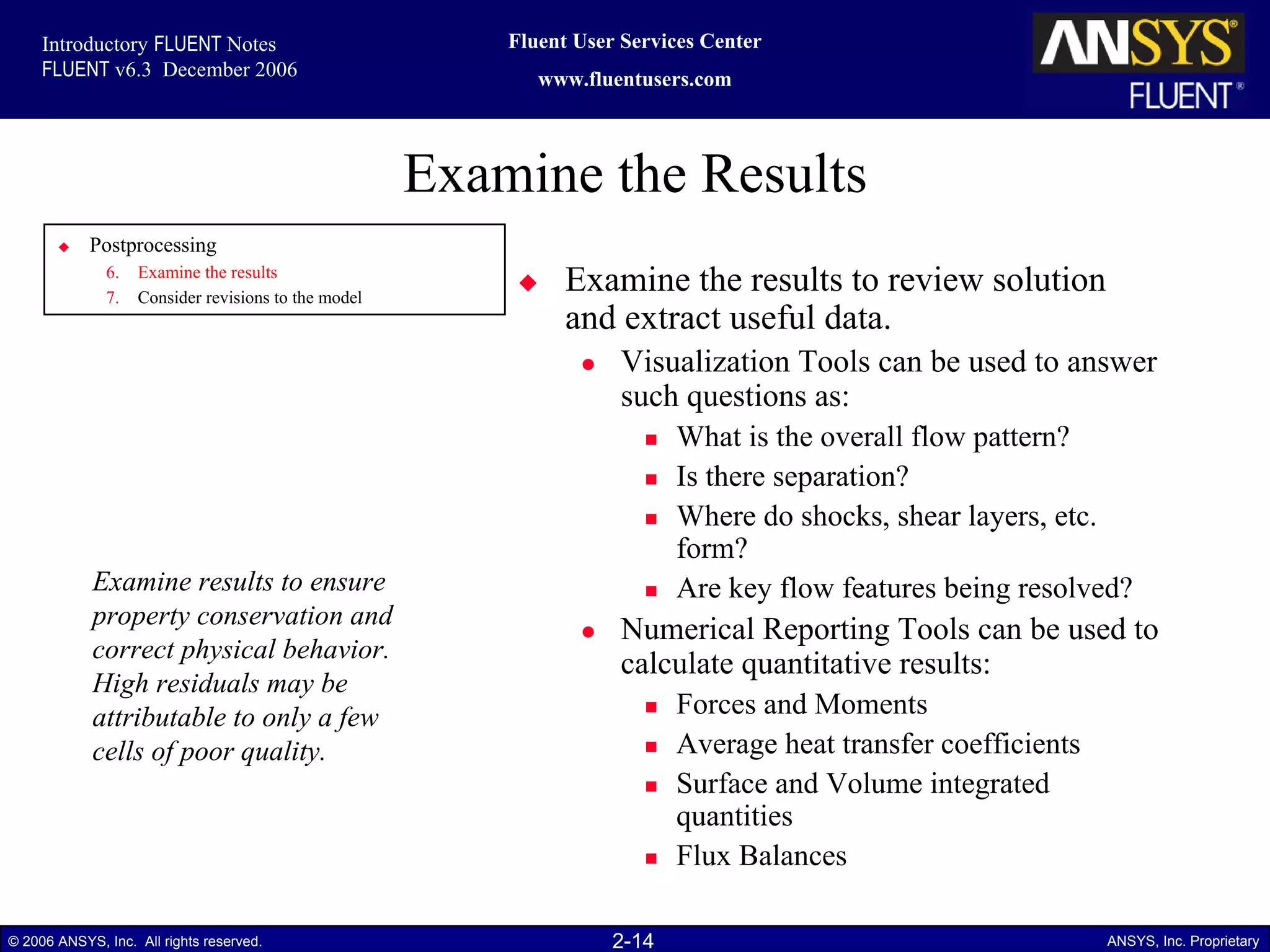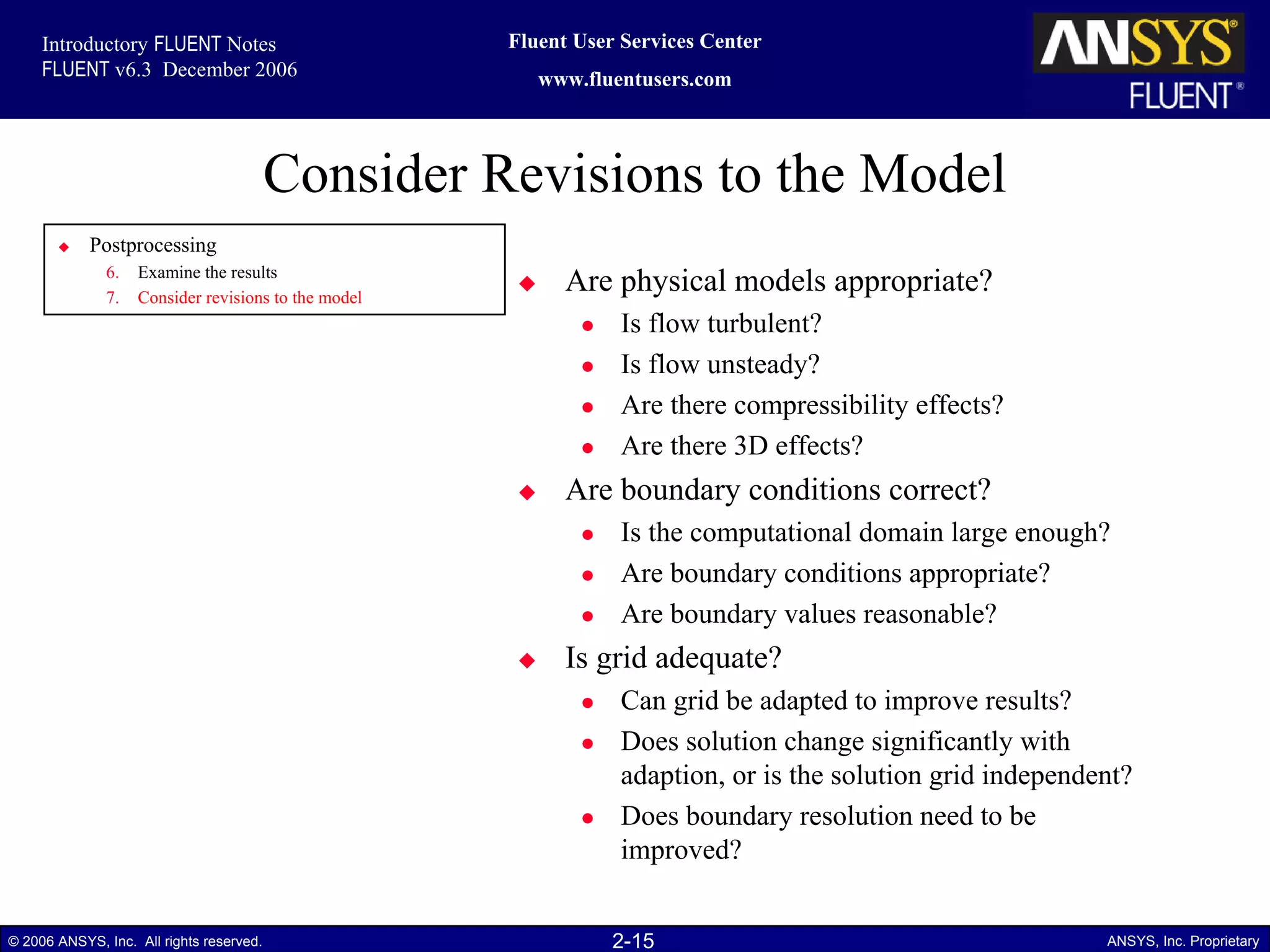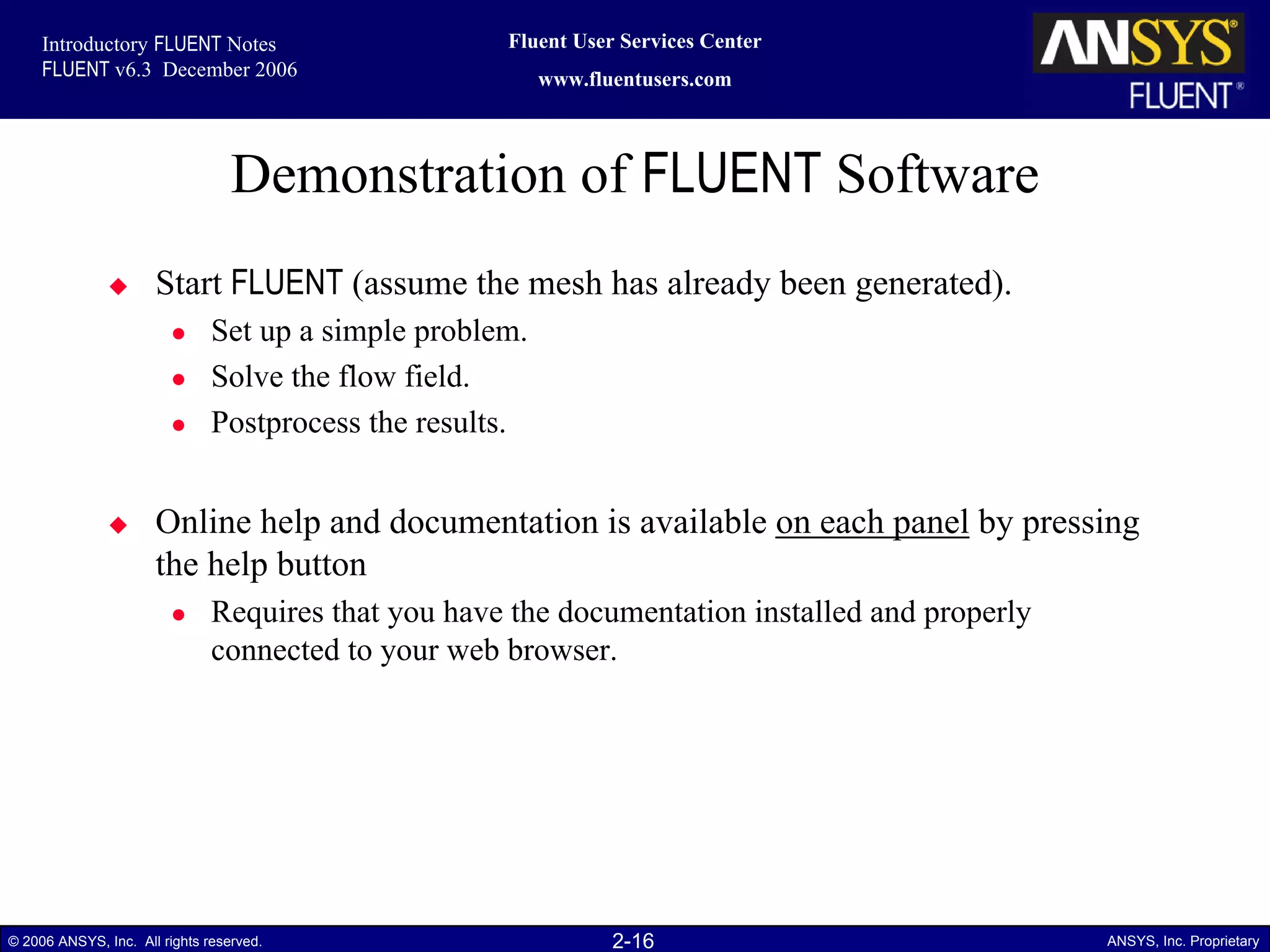Computational fluid dynamics (CFD) uses numerical methods to solve equations governing fluid flow. CFD analysis complements testing by reducing experimental effort. CFD modeling involves preprocessing like meshing the domain, setting up physical models and boundary conditions, solving the governing equations, and postprocessing results like visualizing flow patterns. FLUENT is a commercial CFD software that uses the finite volume method to discretize and solve transport equations for various flow properties.
